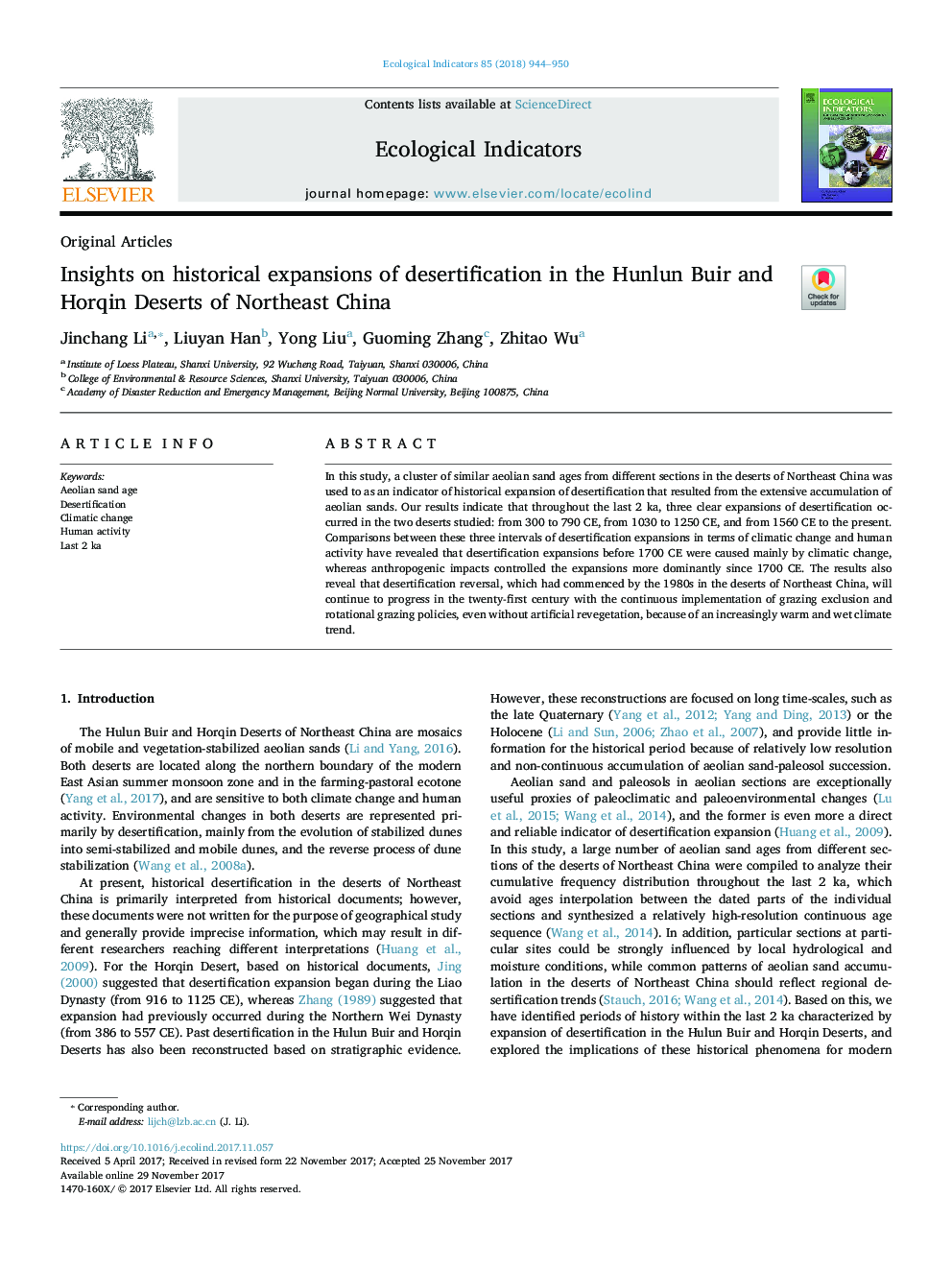| Article ID | Journal | Published Year | Pages | File Type |
|---|---|---|---|---|
| 8845773 | Ecological Indicators | 2018 | 7 Pages |
Abstract
In this study, a cluster of similar aeolian sand ages from different sections in the deserts of Northeast China was used to as an indicator of historical expansion of desertification that resulted from the extensive accumulation of aeolian sands. Our results indicate that throughout the last 2 ka, three clear expansions of desertification occurred in the two deserts studied: from 300 to 790 CE, from 1030 to 1250 CE, and from 1560 CE to the present. Comparisons between these three intervals of desertification expansions in terms of climatic change and human activity have revealed that desertification expansions before 1700 CE were caused mainly by climatic change, whereas anthropogenic impacts controlled the expansions more dominantly since 1700 CE. The results also reveal that desertification reversal, which had commenced by the 1980s in the deserts of Northeast China, will continue to progress in the twenty-first century with the continuous implementation of grazing exclusion and rotational grazing policies, even without artificial revegetation, because of an increasingly warm and wet climate trend.
Related Topics
Life Sciences
Agricultural and Biological Sciences
Ecology, Evolution, Behavior and Systematics
Authors
Jinchang Li, Liuyan Han, Yong Liu, Guoming Zhang, Zhitao Wu,
